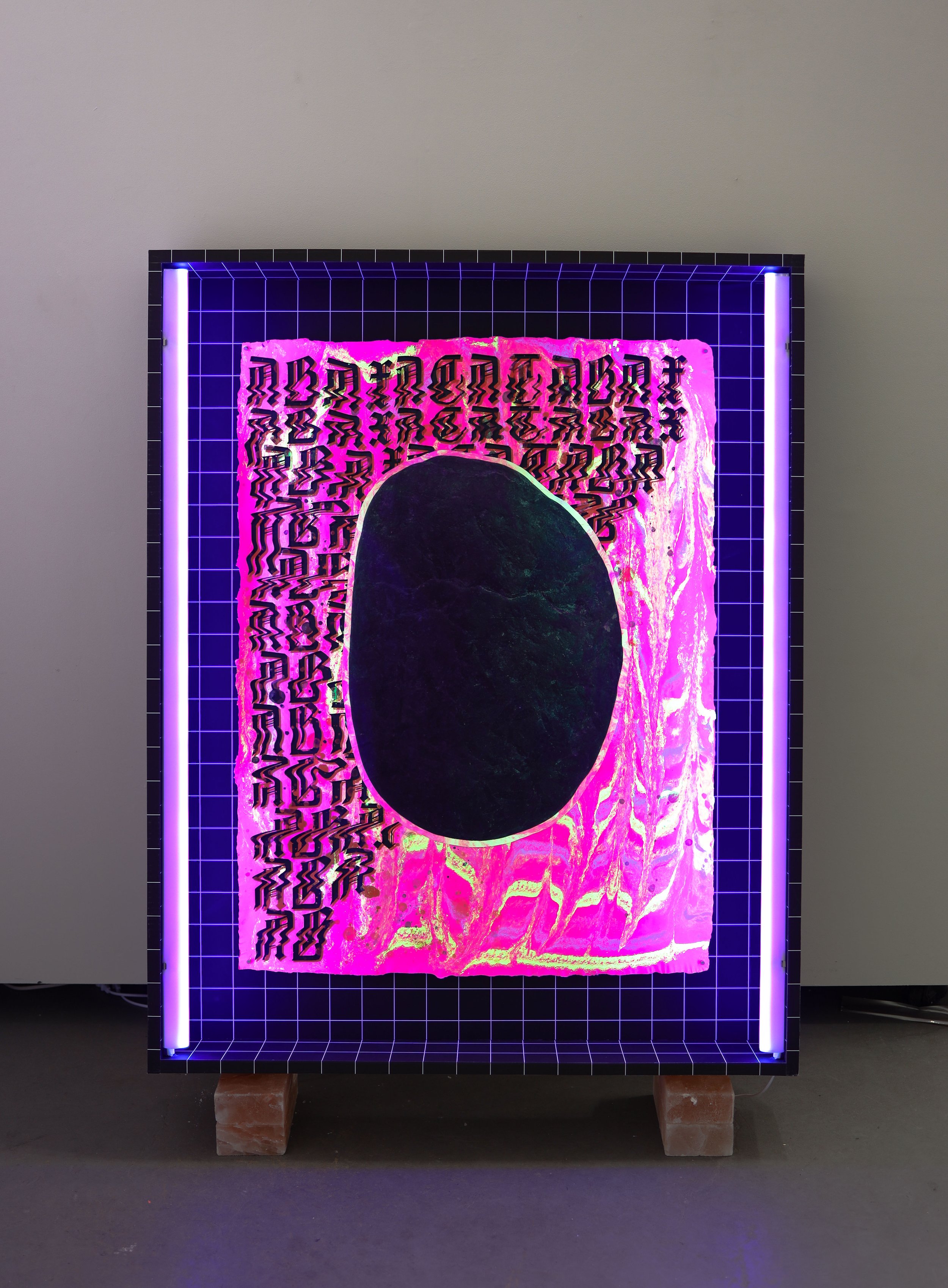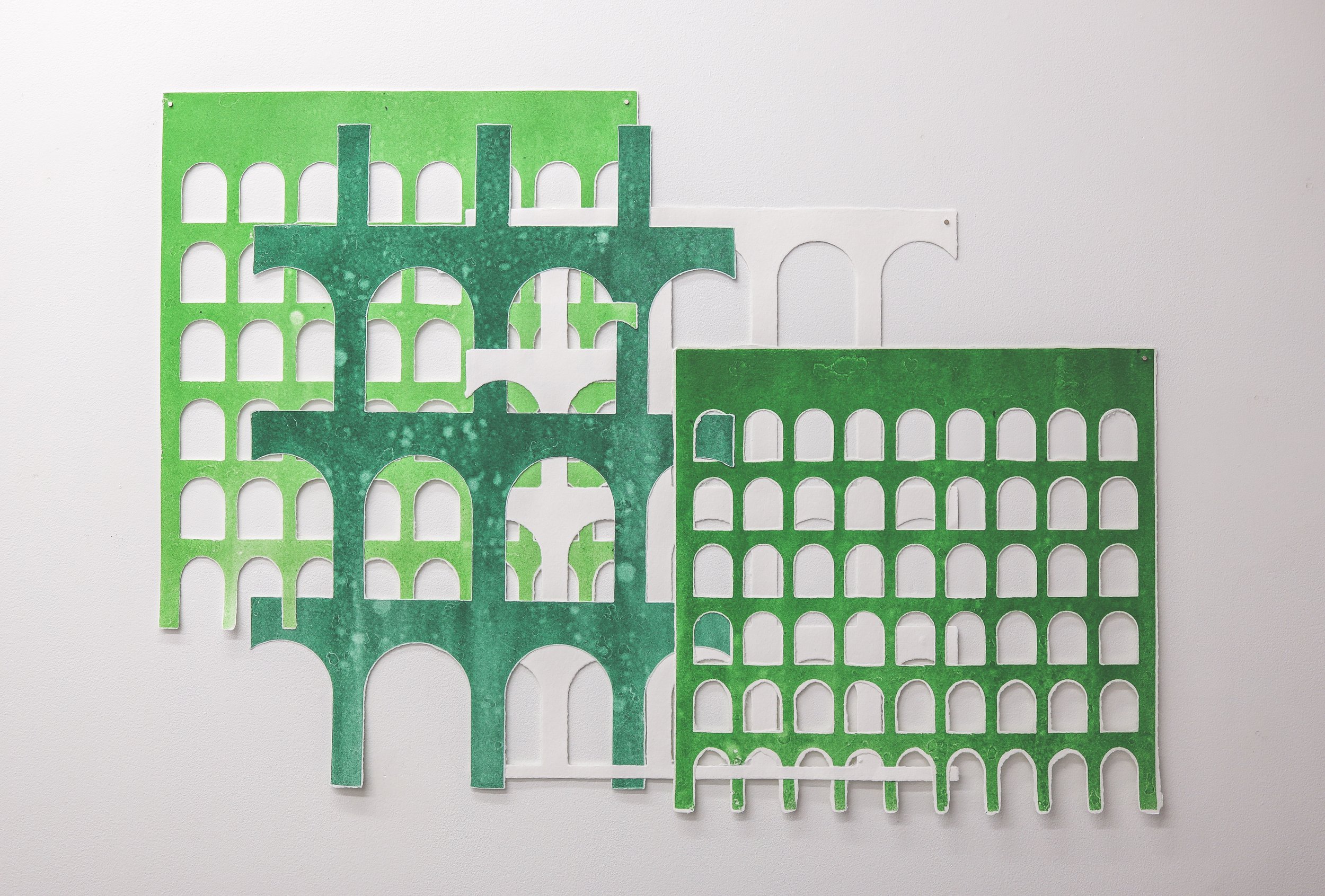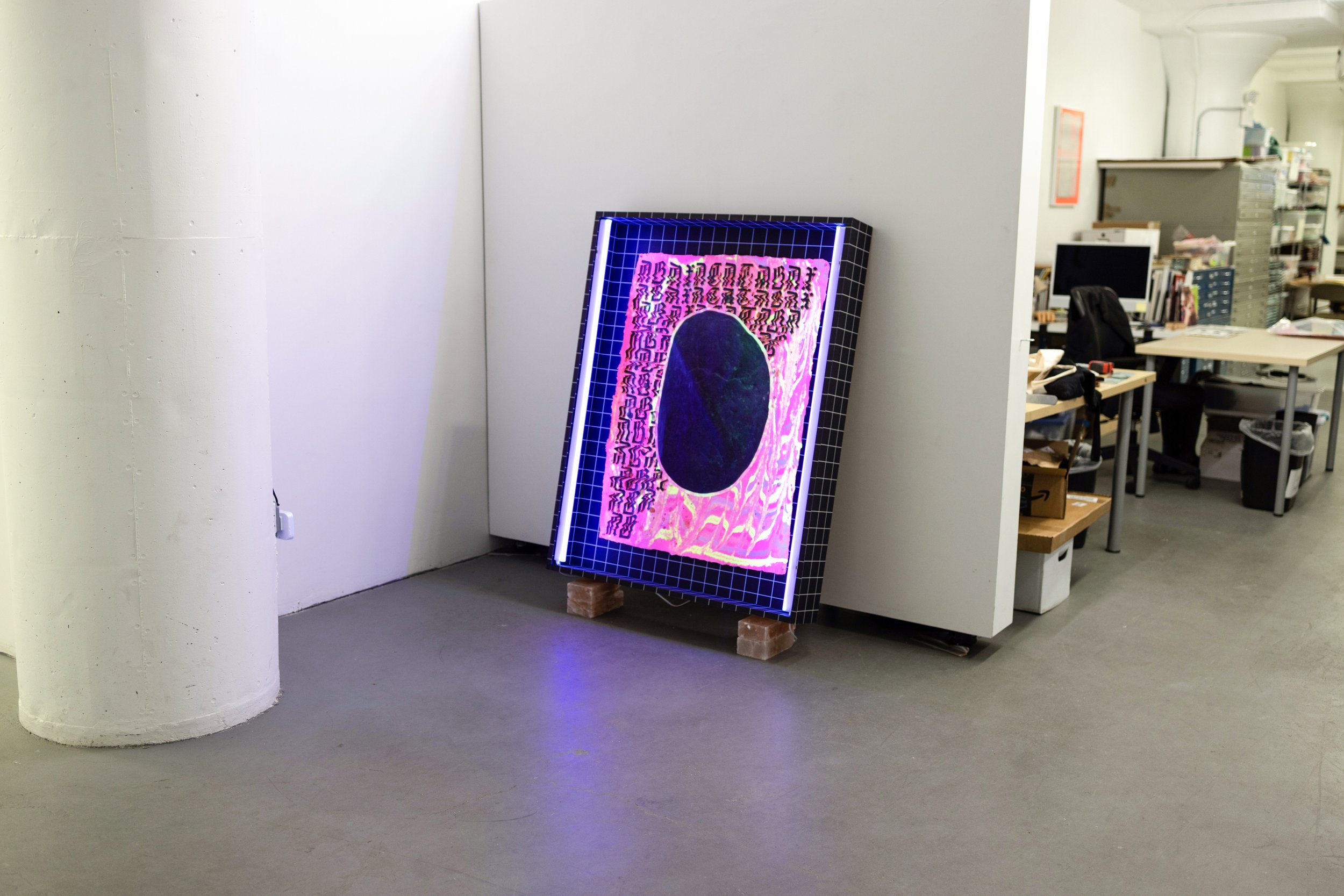
Pulp Memory
Fanny Allié, Juan Hinojosa, Melissa Joseph, Shervone Neckles,
Armita Raafat, Robert Raphael, and Jason Urban & Leslie Mutchler
Curated by Eliana Blechman


























Pulp Memory presents new works in handmade paper by Dieu Donné 2020-2021 Workspace Residents. Using a wide variety of hand papermaking techniques, the included artists consider themes of personal, cultural, and historical memory. They explore and experiment with paper as a process-driven medium, allowing for care, consideration, and rumination on familiar forms. The featured artists construct contemporary altars, monuments, and mementos, bringing power, meaning, or an otherworldliness into their work.
Fanny Allié and Juan Hinojosa incorporated found materials, textiles, and objects into their paper, considering waste in a consumer-based culture and their own use of everyday materials, while elevating discarded items into reverential ones. Melissa Joseph and Shervone Neckles mined their personal archives, pulling inspiration from old photographs and family recipes to honor moments and traditions. Armita Raafat, Robert Raphael, and Jason Urban & Leslie Mutchler considered their own ties to the cultural and historical, bringing in traditional textiles and patterns, recreating monumental architecture, and constructing modern-day shrines.
Fanny Allié’s practice is influenced and directed by the lost elements of daily life. The artist incorporates found and discarded materials, including textiles and objects, into her work, juxtaposing elements to produce contemporary records of the everyday. Acting as a modern-day scavenger of her own refuse and that of others, Allié repurposes overlooked objects in an effort to expose the human traces woven into these materials and to redirect the waste of capitalist consumer culture.
Multimedia artist Juan Hinojosa explores pop and consumer culture in his work, collaging and juxtaposing brightly colored textiles, toys, papers, and other found objects. His meticulously collected materials reflect the artist’s own habits and behaviors, drawing on his background growing up with American pop culture as a child of immigrants. Hinojosa’s work elevates everyday items into vibrant compositions evocative of sacred spaces and rituals. His Portals series made at Dieu Donné, for example, is reminiscent of the stained glass in church windows, but intersperses colorful and playful imagery as stand-ins for religious iconography.
Melissa Joseph explores memory, history, and diaspora in her work, centering bodies of women and people of color through the recreation of her family photographs. For Joseph, the photographs from her family’s archive act as markers of her multicultural identity, as well as a means towards feeling connected to relatives living overseas in India. At Dieu Donné Joseph used pulp paint – a finely beaten, pigmented linen pulp that can be used like paint – on handmade abaca and cotton paper to create vibrantly colored and nuanced images of her family photographs. In recreating her family’s archive through labor-intensive processes, Joseph offers attention and care to important moments and figures from her life.
Interdisciplinary artist Shervone Neckles draws on her Grenadian background to explore personal and cultural memory. Incorporating sensorially evocative materials into her practice, including textured fabrics, cast personal objects, and foods, Neckles’ work takes on an emotional weight that is rooted in historical events. At Dieu Donné, Neckles experimented with incorporating ingredients from family recipes into her work, mixing food into paper pulp and embedding it onto paper base sheets. In bringing these familial recipes into new forms, Neckles translates important personal and cultural stories, relationships, and memories into contemporary narratives.
Armita Raafat recontextualizes historical architectural and textile motifs to create new ways of engaging with traditional forms. While at Dieu Donné, Raafat incorporated khoos doozi, a traditional Iranian embroidered textile technique, into her work. By embedding fragments of fabric in richly pigmented, handmade paper, Raafat creates a new form of weaving and embroidering within the sheet, again recontextualizing traditional crafts into contemporary structures.
Robert Raphael’s work brings together histories of architecture, design, and craft. Using blowouts–a technique in which pulp is washed away from a stenciled form to create a design–Raphael’s pieces made at Dieu Donné are seemingly excavated out of layers of pulp, constructed through removal rather than addition. His stratified and interwoven paper archways create the impression of an extensive cityscape folding into itself, an impressive display that brings ambiguity to monumental symbolic forms.
Jason Urban and Leslie Mutchler work collaboratively through an interdisciplinary, research-focused practice to explore the facts and fictions of pedagogy. In their Folk Magic series, produced over the course of their residency at Dieu Donné, Urban and Mutchler built wooden altars that house handmade marbled fluorescent paper works. The altars incorporate printed backgrounds and UV neon lights, evoking an otherworldly digital space, while they sit on raw blocks of pink Himalayan salt, creating a tie to the natural, physical, and spiritual world. The handmade paper enclosed offers further ties to both the digital and analog; distorted letters on marbled paper recall calligraphy on ancient scrolls, while the stretched structure of the text suggests a computerized glitch. In bridging seemingly disparate worlds, Urban and Mutchler construct invented and anachronistically sacred objects and rituals.
Photos by Tejan Rahim.

























